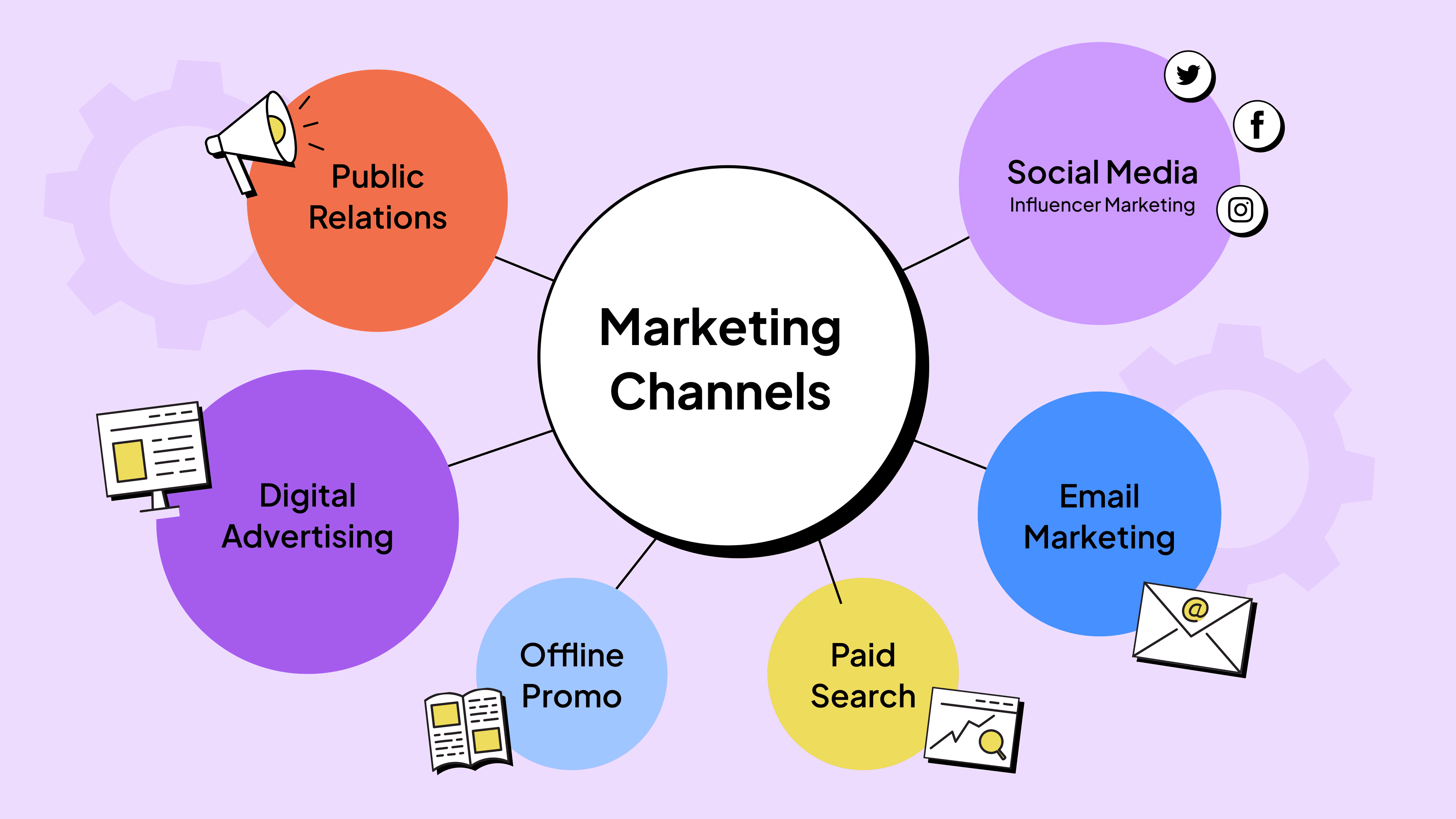How to write a cold email that converts: Proven strategies for 2024

In an era where everyone's inbox is flooded with offers and proposals, knowing how to write a cold email that not only stands out but also converts, is a skill of utmost importance. Whether you're aiming to generate email leads, pitch a service, or establish a connection, a well-crafted cold email can be the gateway to valuable opportunities. The importance of mastering this technique cannot be overstated, as it directly impacts the effectiveness of your outreach efforts. However, crafting an email that catches the recipient's eye and prompts action requires insight into what makes a cold email successful.
This article delves into the art and science of creating cold emails that convert. From understanding what a cold email is and why many fail to grab attention, to honing the perfect subject line, engaging opening line, and compelling email body—all the way through to A/B testing for optimization—each aspect will be covered comprehensively. By personalizing your cold email, adding value within your pitch, generating a strong call-to-action (CTA), and polishing your email signature, you will learn the proven strategies that can make your cold emails not just read, but acted upon in 2024.
Understanding Cold Emails
A cold email is an unsolicited email sent to a recipient without prior contact or permission from the recipient . It is a way to introduce yourself to someone you don't know and try to build a relationship with them in the hopes of eventually turning them into a customer .
The primary goal of cold emailing is to gain a benefit in terms of sales, opportunities, or any other dual-sided benefit from someone with whom the sender has no prior relationship or connection . Cold emailing is an effective strategy for businesses of all sizes to reach new prospects and close deals .
Definition of Cold Emails
A cold email is an email aimed at gaining a benefit in terms of sales, opportunities or any other dual-sided benefit from someone with whom the sender has no prior relationship or connection .
Purpose of Cold Emails in Business
Cold emailing is a powerful outreach strategy that can help businesses connect with potential customers and generate leads . It is cost-effective and offers high scalability, making it an ideal approach for businesses of all sizes .
Many companies use cold emails for their sales outreach efforts. Some famous brands that have successfully utilized cold emailing include:
- HubSpot: They use personalized emails to introduce their software to potential clients and offer free trials and demos, converting many prospects into paying customers .
- Dropbox: By offering additional storage space through referral links in cold emails, Dropbox rapidly expanded its user base and became one of the most popular cloud storage providers .
- Grammarly: They reach out to potential users, particularly businesses and enterprises, with free trial offers via cold emailing, generating leads and growing their user base .
Why Cold Emails Fail
Despite the potential of cold emailing, many campaigns fail to achieve the desired results. There are several reasons why cold emails may not resonate with recipients or fail to generate conversions.
Common Mistakes
One of the most common mistakes in cold emailing is not researching the ideal customer profiles (ICPs) and buyer personas properly . Sending generic emails without tailoring them to the specific pain points and goals of the target audience can lead to low open and reply rates.
Another mistake is not segmenting prospects based on factors like potential contract value, job titles, pain points, and goals . This lack of segmentation prevents the creation of personalized emails that recipients can relate to on a personal level.
Failing to warm up email accounts before launching a campaign is another pitfall . Email warm-up improves the sender reputation of new email accounts and helps ensure that cold emails land in the inbox rather than the spam folder.
Using primary domains to send cold emails is a blunder that can ruin the reputation of a business's main domain . It's crucial to set up secondary domains and email accounts specifically for cold emailing to protect the primary domain's reputation.
Impact of Generic Messages
Sending generic emails is a major reason why many cold email campaigns fail to engage recipients. A study by Woodpecker revealed that highly personalized cold emails with tailored messages and subject lines can increase reply rates by up to 142% .
Personalization goes beyond just using the recipient's name or company name. It involves mentioning specific pain points, goals, and achievements to create a genuine connection. Prospects are more likely to respond when they feel the email is relevant and addresses their unique needs.
On the other hand, generic emails that could apply to anyone fail to capture attention or build trust. They often end up in the trash or spam folder, leading to low open rates and even lower reply rates.
To stand out in a crowded inbox, it's essential to invest time in researching prospects, segmenting them based on key criteria, and crafting personalized messages that resonate on an individual level. By avoiding common mistakes and focusing on delivering value through tailored content, businesses can significantly improve the success rates of their cold email campaigns.
Crafting the Perfect Subject Line
The subject line is your first and sometimes only chance to grab your prospect's attention. It is inseparably linked to the open rate of your cold email. If the open rates drop, it's time for a little investigation - one of the reasons might be your subject line .
Here are some tips to craft the perfect subject line that resonates in 2024:
Personalization Tips
- Keep it short and sweet, usually under four words. Test different variants to see what works for you .
- Avoid spam words and cliches. Instead, make it clear, to the point, and specify a time so you won't trigger the spam filters .
- Write your subject line in lowercase. Don't overuse caps lock or exclamation points to make it look more like an internal email .
- Relate your subject line to current events or use the prospect's first name if you previously had a conversation with someone from the company .
- Personalize the subject line based on the prospect's interests or hobbies found on their LinkedIn profile .
Examples of Effective Subject Lines
- "Question for {company_name}" - This subject line has a very high open rate of more than 90% and works in almost all scenarios .
- "[Company Name]" - Writing just the name of the prospect's company with no other context will create a sense of curiosity and lead to a higher open rate .
- "Idea for [Company Name]" - This subject line can be used in a variety of ways when you mention the name of a prospect's company .
- "[Your First Name] x [First Name]" - Writing your first name and the prospect's first name with an "x" in between has a high open rate .
- "[First Name] - thoughts?" - This is short, sweet, and triggers curiosity from the prospect, leading to a high open rate .
Remember, whatever you tease in the subject line has to be explained in the email body. That's the golden rule . Test which subject line will get more opens through A/B testing to refine your approach and boost your open rates .
Writing an Engaging Opening Line
After capturing your prospect's attention with a persuasive subject line, the next crucial step is to nail the introduction. At this stage, you must keep hold of their attention and entice them to read more.
Remember, you only have seconds to catch their interest before they hit delete. So, skip the generic opener and go for something personalized . We recommend finding an interesting fact, achievement, or pain point about their company you can reference. This shows you did your research and gets their attention.
For example: "As the Director of Marketing at [Company], you must get hundreds of cold emails pitching random products. I'll try not to waste your time and keep this short…"
A thoughtful opening line like this works better than a generic "How are you?" or talking about yourself first.
Don't use a formal language
Like I mentioned above, people know how to spot sales automation now. By using a more casual language, your copy will stand out compare to other cold emails received by your prospect .
Your goal should be to do the opposite of traditional templates .
Using what I call generic personalization
Personalized first lines work the best but it's very time consuming to prepare them. Instead, let me show you how you can personalize at scale your cold emails :
- Work on your ICP and segment them by industry and location
- Craft a personalized opening line for your buyer persona
For example, the icebreaker could be:
Hey {{firstName}} - it's cool to see an Austin SEO agency, saw you leverage your location to get some local clients, well done!
Hyper-personalizing your opening lines manually or with AI
Hyper-personalizing cold email first lines takes time, but the ROI is massive. You basically have two options here: you write the lines manually or you use an AI icebreakers generator .
With AI you'll be able to add a basic level of personalization as AI first lines are generated from website URLs or LinkedIn URLs .
Overall I'd say you better personalize your first lines manually if your offer is high-ticket, otherwise go for the AI way .
Some other tips to hyper-personalize your opening lines:
- Use LinkedIn Posts & Tweets about your prospects
- Find podcasts your prospects made
- Read blogposts your prospects wrote
By personalizing your cold email opening lines using these techniques, you can create a genuine connection with your prospects right from the start. This sets the tone for the rest of your email and increases the chances of getting a positive response.
Personalizing Your Cold Email
Personalization is a crucial element in crafting effective cold emails that resonate with your prospects. By tailoring your message to their specific interests, pain points, and goals, you demonstrate that you have taken the time to understand their unique needs .
Researching Your Prospect
To personalize your cold emails effectively, start by thoroughly researching your prospects. Use the information gathered during the prospecting phase to discover their pain points, goals, recent achievements, and other relevant details . LinkedIn posts, tweets, podcasts, and blog posts written by your prospects can provide valuable insights for hyper-personalizing your opening lines .
Using Personalization at Scale
While manual personalization yields the best results, it can be time-consuming when reaching out to a large number of prospects. To personalize at scale, identify the top 10 triggers for personalization and create templates for each of them . This allows you to quickly customize your emails with slight tweaks based on the prospect's specific situation.
Personalization goes beyond simply using the recipient's name or company name. Mention specific pain points, goals, and achievements to create a genuine connection . A study by Woodpecker revealed that highly personalized cold emails with tailored messages and subject lines can increase reply rates by up to 142% .
When personalizing cold emails at scale, consider segmenting your prospects based on factors like industry, location, and pain points . Craft personalized opening lines for each buyer persona, such as:
"Hey {{firstName}} - it's cool to see an Austin SEO agency, saw you leverage your location to get some local clients, well done!"
By combining thorough research, segmentation, and personalized templates, you can create cold emails that stand out in your prospects' inboxes and increase your chances of receiving a positive response.
Adding Value in Your Pitch
When crafting a cold email pitch, it is crucial to focus on adding value for the recipient rather than simply promoting your product or service. By demonstrating how your offering can solve their specific pain points or help them achieve their goals, you are more likely to capture their interest and encourage them to engage with your message.
Focusing on Benefits Over Features
Instead of merely listing the features of your product or service, emphasize the benefits that the recipient can gain from using it. Explain how your solution can save them time, increase their productivity, or boost their revenue. By highlighting the tangible outcomes they can expect, you make your pitch more compelling and relevant to their needs .
For example, instead of saying, "Our software has advanced reporting capabilities," you could say, "With our software, you can generate detailed reports in minutes, giving you more time to focus on growing your business."
Storytelling Techniques
Incorporating storytelling elements into your cold email pitch can be a powerful way to engage the recipient and make your message more memorable . Share a brief anecdote or case study that illustrates how your product or service has helped similar businesses overcome challenges or achieve success.
By using storytelling techniques, you can create an emotional connection with the recipient and demonstrate the real-world impact of your offering. This approach can be particularly effective when targeting startups or businesses in industries that you are less familiar with, as it allows you to relate to their unique situations and show that you understand their needs .
When adding value to your pitch, it is important to keep the message concise and focused on the recipient's interests. Avoid rambling or including irrelevant information that may distract from your main point. Instead, use clear and persuasive language that highlights the specific benefits and outcomes that the recipient can expect from engaging with your product or service.
By focusing on adding value and using storytelling techniques, you can craft a cold email pitch that stands out from the competition and resonates with your target audience. Remember to tailor your message to the recipient's unique needs and interests, and always prioritize their perspective over your own sales goals.
Creating a Strong Call-to-Action (CTA)
A compelling call-to-action (CTA) is crucial in converting prospects into customers through cold emails. Your CTA should be clear, concise, and persuasive, guiding the recipient towards the desired action. It is recommended not to include any CTAs or attachments in the first email, but rather send a plain text email as your initial message and follow up with a clear CTA .
When crafting your CTA, align it with your pitch and the rest of the email content. Ensure that it flows naturally and matches the tone of your message . Keep your CTA short and direct, ideally between 4-8 words, as this length has been shown to have the highest click-through rates .
Personalization is key in creating effective CTAs. Tailor your call-to-action to the specific needs, pain points, or interests of your target audience. Personalized CTAs have been found to perform 42% better than generic ones .
Examples of Effective CTAs
Here are some examples of winning cold email CTAs:
- "Just pick a time here: lemcal.com/myname" - Offering a scheduling link makes it easy for the prospect to choose a convenient time for a meeting .
- "Would you agree?" - Asking an engaging question encourages the prospect to respond and express their interest .
- "Think this could help your team?" - This CTA is tailored to the prospect's specific problem and suggests that the sender has a solution .
- "Would you be interested in integrating your stack with a single platform?" - Addressing a specific need of CTOs and CIOs, this CTA uses their language and highlights a clear benefit .
Avoiding Salesy Language
When crafting your CTA, it's crucial to avoid being too salesy or pushy. Instead of asking the recipient to make a purchase right away, focus on building a relationship and offering value first .
Your CTA doesn't always have to result in a sale. Encouraging prospects to take the next step in the sales process, such as scheduling a meeting, signing up for a demo, or requesting more information, can be effective in moving them through the funnel .
Use persuasive language that is respectful of the recipient's communication preferences. Overly aggressive or generic language can be off-putting and reduce the likelihood of a response .
By creating a strong, personalized, and non-salesy call-to-action, you can significantly increase the chances of converting your cold email prospects into engaged leads and, ultimately, customers.
Polishing Your Email Signature
Your email signature is a crucial element in creating a professional and trustworthy impression on your cold email recipients. It serves as a digital business card, providing essential information about you and your company . A well-crafted signature can enhance your credibility and encourage recipients to engage with your message.
Elements of a Professional Signature
When designing your email signature, include key elements such as your name, job title, company name, and contact information . Keep the design simple and visually appealing, using a clean layout and a color palette that complements your brand . Incorporating social media icons can drive traffic to your other platforms and provide a more complete picture of your professional presence .
Consider adding a compelling call-to-action (CTA) in your signature to turn passive readers into active visitors or customers . Position the CTA at the bottom of your signature, using clear and concise language that highlights the benefit for the recipient .
Enhancing Trustworthiness
A professional email signature plays a vital role in establishing trust with your cold email recipients. By providing accurate and up-to-date information about yourself and your company, you demonstrate transparency and credibility .
Consistency is key when it comes to building trust through your email signature. Ensure that all members of your organization use a consistent signature format, as this helps reinforce your company's image and professionalism .
To further enhance trustworthiness, consider including social proof elements in your signature, such as client logos, awards, or certifications . These elements serve as third-party validations of your expertise and can encourage recipients to view you as a reputable and reliable source.
By crafting a polished and professional email signature, you can leave a lasting impression on your cold email recipients and increase the likelihood of a positive response. Remember to keep your signature concise, visually appealing, and aligned with your overall brand identity.
Conclusion
Throughout this exploration of crafting cold emails that convert, we've delved into the intricacies of personalizing your outreach, from the perfect subject line to the engaging opening line, and from adding value in your pitch to creating a compelling call-to-action. We've underscored the importance of tailoring your message to resonate with your recipients on a human level, thereby setting the foundation for genuine connections. By emphasizing benefits over features, employing storytelling techniques, and fine-tuning your email signature, you position yourself not just as a seller, but as a valuable partner ready to address specific pain points and goals.
The journey towards mastering cold emailing is continuous, reflective of the evolving digital landscape and shifting consumer behaviors. Remember, the essence of an effective cold email lies not just in the content, but in the connection it seeks to build. By approaching each email as an opportunity to educate and converse in a manner that's distinctive and engaging, you elevate your message above the noise. As you apply these proven strategies, remain adaptable, authentic, and always focused on adding value, ensuring your cold emails not only capture attention but also inspire action.
FAQs
1. What are the key elements of a high-converting cold email?
To write a cold email that converts, focus primarily on the recipient and their needs rather than your product or service. Begin by demonstrating an understanding of their business and the specific challenges they face. Avoid rushing into a sales pitch in your initial contact.
2. What are some effective strategies for writing cold emails that generate responses?
Effective cold emails should be crafted with a clear purpose and a personal touch. Start by explaining why you specifically chose to contact them, address a relevant issue they might be facing, and include social proof or examples of past results. The email should be concise, straightforward, and personable. Additionally, crafting an engaging subject line is crucial.
3. How can you create an effective cold email sequence?
An effective cold email sequence can be crafted by starting with a common interest or appreciation for the recipient's work, which helps establish a connection. Include a thought-provoking question to engage them and provide a helpful tip or piece of information to demonstrate your value. This approach helps build a rapport and encourages dialogue.
4. What is a step-by-step guide to writing a cold email that works?
To write a cold email that elicits a response, follow these six steps: Begin with an introduction where you briefly explain who you are and what you do. Describe your offering and its benefits succinctly. Clearly state why you are reaching out to them specifically. Mention a relevant case study or success story to build credibility. Conclude by asking if you can send more detailed information or arrange a further discussion.



